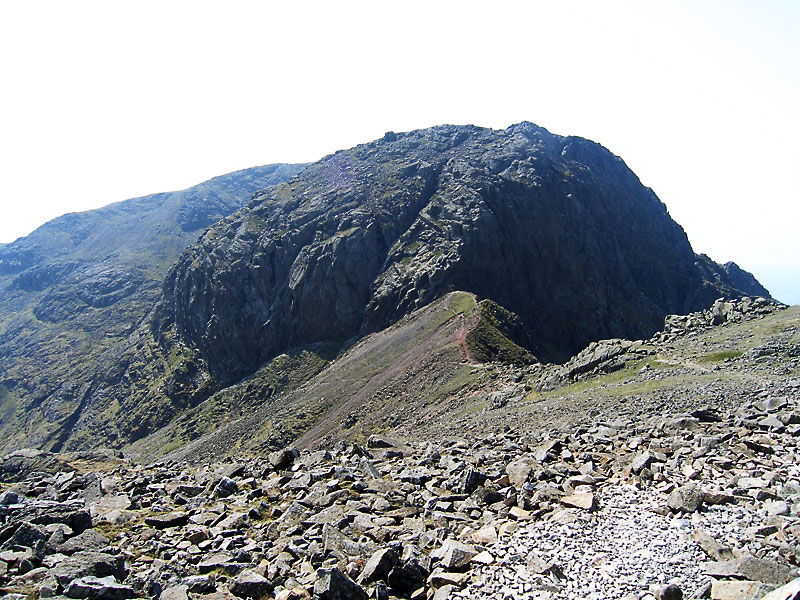Coleridge's 'Circumcursion': Textual History
In endeavouring to map out Coleridge's 1802 tour of the Lake District, there is a risk of privileging the spatial over the textual. In focusing on his geo-specific account of place, we need to remain sensitive to the relatively complex textual history associated with the 'circumcursion'. It is vital to note, that Coleridge's documentation of his 1802 walking tour can be located in two different, yet interconnected and overlapping, textual spaces: his Notebooks and his letters to Sara Hutchinson.
Notebooks
Coleridge was an inveterate notetaker. From 1794, the poet used the private spaces of various notebooks to record thoughts and ideas, experiences and encounters, creative writings and critical readings. In the words of Seamus Perry, the Notebooks, when treated as a single body of work, 'is an astonishing and eminently readable document, a work, by turns, of philosophical profundity, descriptive beauty, verbal brilliance, and human comedy (and sometimes tragicomedy; and sometimes tragedy)' (p. vii).
As ever, Coleridge packed a small pocket-book when he left Greta Hall on 1 August 1802. In general, he would treat these material objects as fluid, flexible spaces and he would often return to a particular book after a number of years: a process of textual revisiting which problematises the attempted imposition of a chronological framework onto the individual entries.
The 1802 Notebook, however, exists as a discrete document (Notebook 2 in the British Library). It appears that Coleridge did not return to this particular book after the initial entries had been made during that summer. This sense of textual self-containment immediately raises crucial questions regarding authorial intentionality. Did Coleridge leave Keswick intending to fill every available blank space in this particular book with an account of his self-styled 'circumcursion'? Does the self-consciousness of this compositional process compromise the interpretation of the Notebooks as essentially private, contemplative, textual spaces? By extension, how should the literary critic seek to handle the textuality and materiality of this document?
Letters to Sara Hutchinson
In order to develop a full understanding of Coleridge's 1802 tour, it is necessary to move beyond the textual space of the notebook and to turn to two letters written to Sara Hutchinson. In lengthy notes to Sara, Coleridge reflects upon the first six days of his excursion in the Lakes, charting his progress through the Cumbrian topography: the first of these letters is undated but covers events from 1 to 5 August; the second records Coleridge's movements on 6 August and was written from 'an Estate House called Toes' in the vale of Eskdale (p. 841). As Earl Leslie Griggs points out in the 'Collected Letters of Samuel Taylor Coleridge', the original copies of these letters have disappeared, 'but the text has survived in the form of a journal made from them by Sara Hutchinson' (p. 834).
 The relationship between the respective contents of the Lake District notebook, and the two letters to Sara Hutchinson, is of great interest. On occasions, Coleridge goes over the same ground, rewriting those landscape experiences already recorded in the notebook. At other points, the epistolary space allows Coleridge to offer a more reflective and measured account of place.
The relationship between the respective contents of the Lake District notebook, and the two letters to Sara Hutchinson, is of great interest. On occasions, Coleridge goes over the same ground, rewriting those landscape experiences already recorded in the notebook. At other points, the epistolary space allows Coleridge to offer a more reflective and measured account of place.
Perhaps the most significant discrepancy between the two texts occurs with the most celebrated episode of the walking tour: Coleridge's description of his descent of Broad Stand. In his Notebooks, the 'dropping from Precipices' (I, 1218) is cursorily described in fragmentary prose: an account which opens up thinking about Coleridge's own movement between the physical acts of 'dropping' and notetaking. In his letter to Sara Hutchinson, however, the experience is imaginatively transformed into an act of death-defying daredeviltry, as Coleridge proudly confesses his addiction to 'one sort of Gambling [ . . . ] When I find it convenient to descend from a mountain, I am too confident & too indolent to look round about & wind about 'till I find a track or other symptom of safety; but I wander on, & where it is first possible to descend, there I go - relying upon fortune for how far down this possibility will continue' (p. 841). The fact that Coleridge was both reflecting upon this experience from the protective enclosedness of the Eskdale valley, and was documenting this spatial experience for an absentee addressee, raises a series of issues regarding the relationship between actual and imaginative geographies and spatialities: questions which intersect with those posed by the textuality of Gray's 'Journal'.

